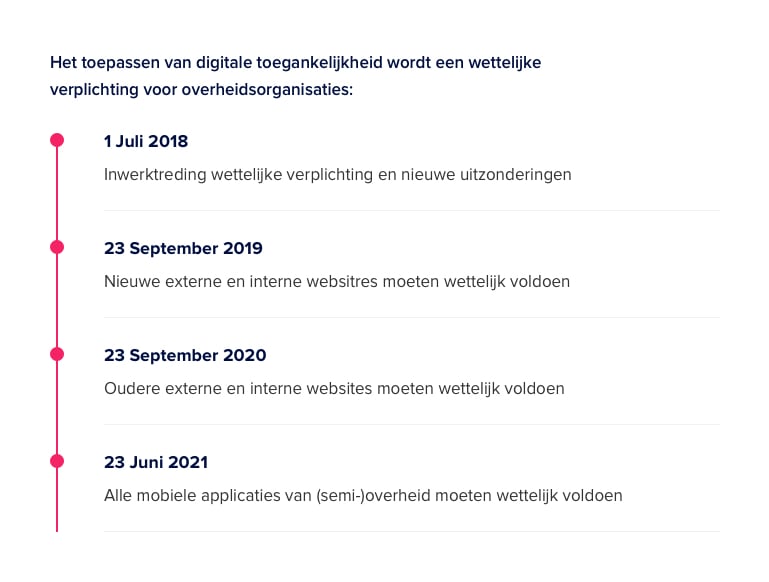Samenvatten en opslaan op:
Unfortunately, viewing and using multilingual websites is still not obvious to many people. As many as 1 in 4 Dutch people cannot navigate a website by default due to a disability. This may be because of a disability, for example, or because of low literacy, dyslexia or color blindness. All of these people experience daily problems online when searching for information or buying products or services.
Yet web design is often still based on the average Internet user. Providing multiple languages and accessibility just takes more work. This not only causes user frustration, but also higher bounce rates. How do you ensure that the large amount of content in different languages is digitally accessible? We offer some tips.
What is digital accessibility?
Digital accessibility is about making all online services and information accessible so that everyone can use them. This is often already a challenge for Dutch websites, but especially for multilingual ones.
The great advantage of offering your website in multiple languages is that it becomes more accessible to a larger audience. Therefore, in times of digitization, digital accessibility for multilingual websites is essential. The ability to appeal to target audiences online is a must in today’s marketing landscape. This can only be done by embracing the diversity of our society in your online strategy. By making multilingual websites accessible, you encourage inclusivity.
Guidelines for websites and applications
In 1999, guidelines were established for Web sites and applications to meet. These are the Web Content Accessibility Guidelines (WCAG). Currently, WCAG 2.1 is in effect. This states, for example, that a website must have a read-aloud option. The language of the website should also be changeable.
In 2016, the European Union decided that all websites and applications should be digitally accessible in the future. This positive outlook for the future is expected to be slowly rolled out into Dutch law. For example, on June 23, 2021, it will become a legal requirement for government and semi-government agencies to make both websites and mobile applications digitally accessible.
Know why digital accessibility should be high on your list of priorities? We previously wrote an extensive article about it on Frankwatching. In this article, we discuss why digital accessibility is important and how it can be applied in practice.
Accessible multilingual websites
With multilingual websites, there are a few important aspects regarding accessibility. If you want to make the multilingual website more accessible, consider the following:
- Set the primary language with an HTML language code. This is essential for tools such as Braille devices.
- Different languages create differences in reading direction, font size and text lengths. Every writing language is different. If your multilingual website consists of many different languages, then it is important to take this into account in terms of web design. For example, the word “search” takes up more space in French than in Dutch. Also, Chinese, for example, is less readable in a small font than English.
- It is not always easy to find a good translation of a particular piece of content. For example, you may use a translation machine for a piece of text, but video content also needs to be translated and made accessible. Several tools have been developed for this purpose.
Use LinQuake for multilingual websites
The LinQuake online translation platform is a convenient online environment with translation technology for multilingual websites. On this platform, for example, you can upload and collect translations. What is possible depends on the complexity of your WordPress website. Depending on the purpose, type of content and desired quality, they deploy a translation machine or several professional translators, by mutual agreement.
The advantage is that LinQuake’s translation technology can handle many different file formats, making specific parts of your multilingual Web site easier to access. For example, it is possible to translate video content using subtitles or a voice-over. For example, the technology can also filter text from an HTML file and later put it back into the code. Want to know what LinQuake has to offer for your website? If so, please contact us.
Getting Started
Making your multilingual website digitally accessible is a big job. Need advice on how to go about this? We are here for you as a sparring partner, or read more about optimizing multilingual websites.
Samenvatten en opslaan op:












